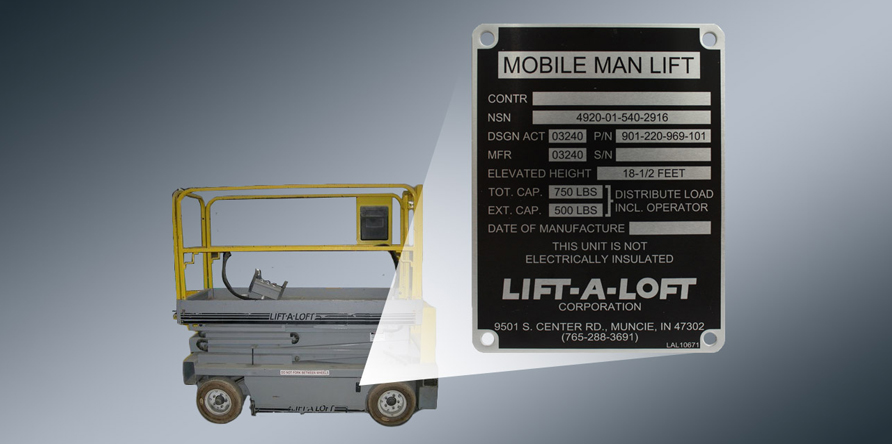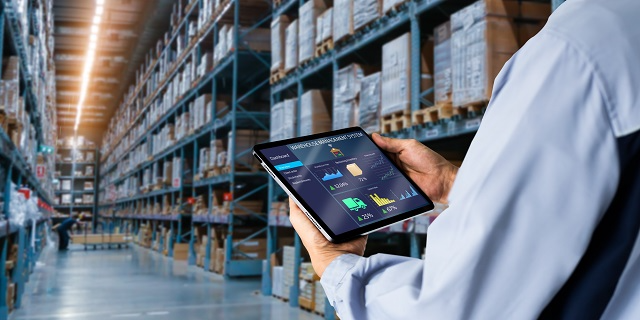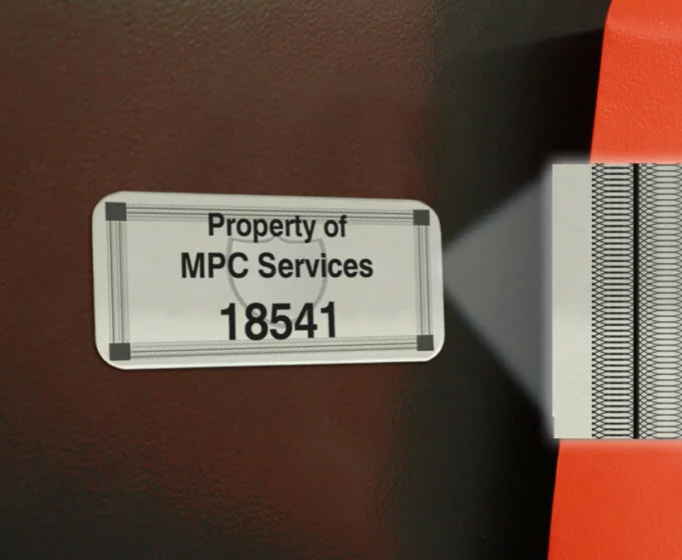What is a Product Identifier, and What is Its Purpose?


How can businesses — and consumers — easily tell products apart? With billions of different products on the market, unique product identifiers (UPIs) are necessary to distinguish products. In fact, product identification is so helpful that it’s often mandatory in applications like manufacturing and healthcare.
While most consumers are familiar with UPC codes for retail or eCommerce, these identifiers can be used for any type of asset tracking. Learn what product identifiers are, the different types of UPIs, and why they’re so important for both consumers and brands.
In this article:

A product identifier is a unique series of digits used to identify a specific product, machine, shipment, or material. UPIs often use just numbers, but some identifiers will use both numbers and letters — the latter is more common with businesses that need to generate thousands of unique identifiers.
Product identifiers must be unique, and companies typically don’t recycle identifiers from assets that have been retired or disposed of, either. More often than not, manufacturers determine a product or machine’s product identifier, but in some cases, an organization like GS1 might create it.
Product identifiers are often tied to a part number, chemical formula, or the manufacturer’s name. You can usually find the product identifier below the product’s barcode or QR code.
Product identifiers are a helpful way to differentiate products, but they’re far from uniform. You’ll need to understand the different types of product identifiers to determine which works best for your organization.
The easiest way to create a product identifier is by the manufacturer’s name. For example, some UPIs will start with the first three or four letters of the manufacturer’s name, followed by an alphanumeric code. This helps brands distinguish between different makes and models from the same manufacturer.
Manufacturer Part Numbers (MPNs) are provided by the manufacturer. This number tells you which manufacturer made a part and can even tell you which products the part is compatible with.
Global Trade Item Numbers (GTINs) are unique numbers used for products in the retail or ecommerce space. They’re valuable because GTINs are an internationally-recognized number, which is perfect for multinational companies. Generally, GTINs are eight to 14 digits long, depending on how many products the retailer makes and how much space there is on the product for the code.
Universal Product Codes (UPCs) are also called GTIN-12 and are mostly used in North America. This is the code that many American consumers are likely already familiar with; it’s the code beneath the bar code on products you find in the grocery store.
European Article Number (EAN) is similar to the North American UPC, but it’s mostly used in Europe. It’s also called GTIN-13 because it’s one digit longer than GTIN-12.
International Standard Book Number is a unique product identifier just for books that’s been in use since 1969. It’s on an international scale, too, so ISBN is more standardized than many product identifiers.

Before modern identifiers, products were identified by descriptive labels, brand names, and manual record-keeping. These processes were time-consuming and prone to error, relying heavily on visual inspection and the expertise of employees to distinguish between items.
Over the years, product identifiers have played a vital role in advancements across industries.
As manufacturing and retail began to scale globally, there was a pressing need for standardized product identification. The introduction of standardized codes, such as the Universal Product Code (UPC) in the 1970s, marked a significant milestone.
The UPC allowed for the automatic identification and tracking of products through barcodes, revolutionizing inventory management and the checkout process. This innovation facilitated the rapid expansion of supermarkets and chain stores.

Trade globalization increased the need for more standardized product identification. Organizations like the International Organization for Standardization (ISO) and the adoption of international standards such as the International Article Number (EAN) extended the concept of product IDs beyond national borders. This facilitated international trade, enabled efficient supply chain management, and supported the growth of global retail chains.
The internet and digital technology introduced new ways to identify and track products. RFID (Radio Frequency Identification) tags, QR codes, and digital product identifiers for online goods became prevalent.
These technologies offered more detailed tracking and data collection capabilities, enabling innovations in inventory management, personalized marketing, and e-commerce. Some e-commerce platforms have developed their own standardization, such as the Amazon Standard Identification Number (ASIN). These identifiers are crucial for managing vast online inventories and facilitating seamless transactions across global e-commerce platforms.
Today, there’s a growing demand for sustainability and ethical practices. In response, traceability standards have emerged, along with product identifiers that provide information on the product’s origin, environmental impact, and manufacturing conditions.

Product identifiers are a vital complement to many modern-day software technologies such as asset tracking and asset management solutions, inventory management solutions, equipment tracking software systems, preventive maintenance software systems, and point-of-sale solutions. They enable efficient tracking and sales processes, integrating with scanners and databases to provide real-time inventory updates and facilitate quick checkouts.
Product identifiers integrate with scanners and software systems or databases to streamline documentation and information retrieval. For instance, scanning a product ID barcode on a piece of equipment can connect the user with information on the manufacturer, spare parts inventory and suppliers, detailed operating instructions, safety information, and more.
Technicians performing equipment maintenance can also scan product ID barcodes to document the maintenance activities performed. This eliminates the need to manually search a software database to find the correct equipment. Documenting maintenance activities for the wrong asset could have serious operational or safety consequences, as the required maintenance wasn’t actually performed on that asset.
These integrations streamline processes across industries such as retail, warehouse management, manufacturing, healthcare, education, and more, making operations more efficient and reducing human error.
Product identifiers come in all shapes and sizes. They also have different uses across multiple industries. Whether they’re used in eCommerce, book sales, or manufacturer labeling, product identifiers have many benefits.
If you’re selling products on an eCommerce platform like eBay or Amazon, you’re required to provide product identifiers. Without these codes, you won’t be able to list your products in an eCommerce store.
Product identifiers are helpful for boosting eCommerce sales because they ensure your customers buy the right product. This is especially helpful in the auto parts space where shoppers need to differentiate between similar-looking products.
Product identifiers are used to identify hazardous waste and other dangerous materials. This is a legal requirement for manufacturers and industrial businesses, but it’s also a common-sense way to protect workers and everyone downstream in the supply chain. UPIs can also help manufacturers quickly determine where a chemical shipment came from and track how it routes through the supply chain.
Product identifiers make it easy to distinguish products, parts, or shipments from each other with a simple scan. You can use tracking software to monitor this at scale, reducing hands-on management and the errors that come with it.
UPIs make it easy to share critical information about your products, too. Check batch information, manufacturing date and location, and other information with a simple scan. This can save your team a tremendous amount of time in the event of a recall.

Despite their utility, product identifiers are not without challenges. Issues like scanning errors, mislabeling, and counterfeiting can lead to logistical headaches and security concerns.
It’s essential to recognize these limitations to mitigate potential risks and maintain accurate tracking systems. For instance, MPC offers several types of security labels that help to reduce these risks, such as:
Product identifiers are popular in a variety of industries. They’re useful not only for selling goods online but also for streamlining your business and keeping your employees safe.
MPC creates labels and tags that can withstand the toughest conditions. Our heavy-duty industrial product identifier tags are perfect for industrial uses, hazardous waste, and parts labeling. Order a no-strings-attached sample to see the MPC difference firsthand.
Learn more about product identification: Read “101 Product Identification Tips From the Experts”
A durable barcode label or asset tag is the best way to identify a product. These labels should be durable enough to withstand the expected environment the product will be exposed to throughout the product’s lifespan.
Product identification tags typically include a barcode that can be easily scanned to document or access additional information about the product in a central database or software application. Other elements commonly included on product identification tags include the manufacturer’s name and a human-readable serial number or product ID number.
The product ID is usually found on the product’s packaging for packaged goods. Other types of assets such as machinery and equipment typically have a label affixed to the item that contains the product ID and other essential product information, such as:
A product ID is a unique identifier assigned to a product to distinguish it from other items. A product ID can include a series of numbers, letters, or a combination of both. They’re used by manufacturers and retailers to manage inventory, track products, and facilitate transactions. For example, a specific model of a smartphone might have a product ID such as “SM-G950U” indicating its model series and specific version, helping differentiate it from other models.
In many industries, product identifiers are also sometimes affixed to an asset after purchase. For instance, a utility company may assign unique product identifiers to utility poles and other assets for easy identification and maintenance tracking.
Yes, Universal Product Codes (UPCs) are a type of product identifier consisting of a 12-digit numerical code and a corresponding barcode.
A UPC code uniquely identifies a product and its manufacturer, making it easier for retailers to track and scan inventory. It’s a standard product identifier for retail products that facilitates the checkout process, inventory management, and sales tracking.
Our sales engineers are experts in automatic asset tracking, tagging and identification,a nd can answer all your questions. Get in touch now.
Lets Talk ›